The Jurassic rise of squamates as supported by lepidosaur disparity and evolutionary rates
- PMID: 35502582
- PMCID: PMC9064307
- DOI: 10.7554/eLife.66511
The Jurassic rise of squamates as supported by lepidosaur disparity and evolutionary rates
Abstract
The squamates (lizards, snakes, and relatives) today comprise more than 10,000 species, and yet their sister group, the Rhynchocephalia, is represented by a single species today, the tuatara. The explosion in squamate diversity has been tracked back to the Cretaceous Terrestrial Revolution, 100 million years ago (Ma), the time when flowering plants began their takeover of terrestrial ecosystems, associated with diversification of coevolving insects and insect-eating predators such as lizards, birds, and mammals. Squamates arose much earlier, but their long pre-Cretaceous history of some 150 million years (Myr) is documented by sparse fossils. Here, we provide evidence for an initial radiation of squamate morphology in the Middle and Late Jurassic (174-145 Ma), and show that they established their key ecological roles much earlier than had been assumed, and they have not changed them much since.
Keywords: Disparity; Lepidosauria; Macroevolution; Reptilia; Squamata; evolutionary biology; fossil record.
© 2022, Bolet et al.
Conflict of interest statement
AB, TS, JH, MB No competing interests declared
Figures
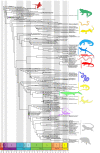
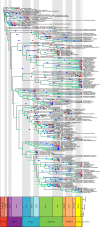
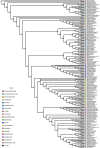
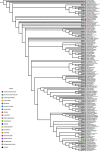
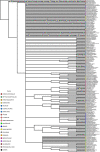
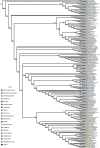
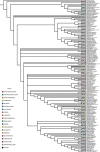
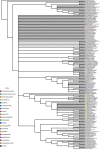
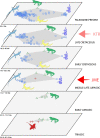
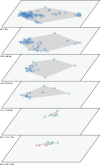
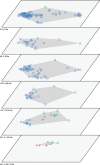
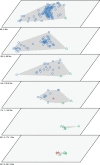
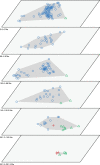
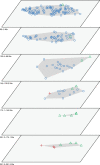
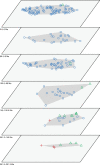













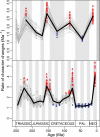

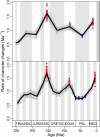
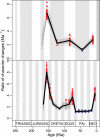
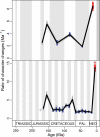

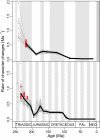
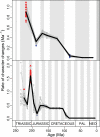
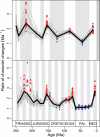
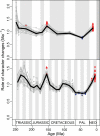
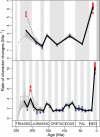
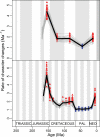
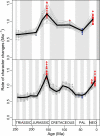
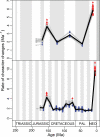
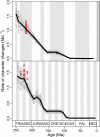
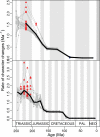
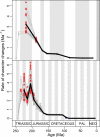











Similar articles
-
Ecomorphological diversification of squamates in the Cretaceous.R Soc Open Sci. 2021 Mar 3;8(3):201961. doi: 10.1098/rsos.201961. R Soc Open Sci. 2021. PMID: 33959350 Free PMC article.
-
Integration of molecules and new fossils supports a Triassic origin for Lepidosauria (lizards, snakes, and tuatara).BMC Evol Biol. 2013 Sep 25;13:208. doi: 10.1186/1471-2148-13-208. BMC Evol Biol. 2013. PMID: 24063680 Free PMC article.
-
Fossil-informed biogeographic analysis suggests Eurasian regionalization in crown Squamata during the early Jurassic.PeerJ. 2024 Apr 30;12:e17277. doi: 10.7717/peerj.17277. eCollection 2024. PeerJ. 2024. PMID: 38708352 Free PMC article.
-
At the feet of the dinosaurs: the early history and radiation of lizards.Biol Rev Camb Philos Soc. 2003 Nov;78(4):513-51. doi: 10.1017/s1464793103006134. Biol Rev Camb Philos Soc. 2003. PMID: 14700390 Review.
-
The molecular evolutionary tree of lizards, snakes, and amphisbaenians.C R Biol. 2009 Feb-Mar;332(2-3):129-39. doi: 10.1016/j.crvi.2008.07.010. Epub 2008 Nov 28. C R Biol. 2009. PMID: 19281946 Review.
Cited by
-
Compound osteoderms preserved in amber reveal the oldest known skink.Sci Rep. 2024 Jul 8;14(1):15662. doi: 10.1038/s41598-024-66451-w. Sci Rep. 2024. PMID: 38977836 Free PMC article.
-
A Palaeogene stem crotaphytid (Aciprion formosum) and the phylogenetic affinities of early fossil pleurodontan iguanians.R Soc Open Sci. 2024 Jan 10;11(1):221139. doi: 10.1098/rsos.221139. eCollection 2024 Jan. R Soc Open Sci. 2024. PMID: 38204790 Free PMC article.
-
The affinities of the Late Triassic Cryptovaranoides and the age of crown squamates.R Soc Open Sci. 2023 Oct 11;10(10):230968. doi: 10.1098/rsos.230968. eCollection 2023 Oct. R Soc Open Sci. 2023. PMID: 37830017 Free PMC article.
-
Evolutionary origins of the prolonged extant squamate radiation.Nat Commun. 2022 Nov 29;13(1):7087. doi: 10.1038/s41467-022-34217-5. Nat Commun. 2022. PMID: 36446761 Free PMC article.
-
An exceptional fossil lizard from the Jurassic period.Nature. 2022 Nov;611(7934):36-37. doi: 10.1038/d41586-022-03364-6. Nature. 2022. PMID: 36289413 No abstract available.
References
-
- Adams D, Collyer M, Kaliontzopoulou A. geomorph: an r package for the collection and analysis of geometric morphometric shape data. Methods in Ecology and Evolution. 2019;1:12035. doi: 10.1111/2041-210X.12035. - DOI
-
- Bapst DW. Paleotree: an R package for paleontological and phylogenetic analyses of evolution. Methods in Ecology and Evolution. 2012;3:803–807. doi: 10.1111/j.2041-210X.2012.00223.x. - DOI
-
- Bolet A, Evans SE. New material of the enigmatic Scandensia, an Early Cretaceous lizard from the Iberian Peninsula. Spec. Pap. Palaeontol. 2011;86:99–108. doi: 10.1111/J.1475-4983.2011.01074.x. - DOI
Publication types
MeSH terms
Grants and funding
LinkOut - more resources
Full Text Sources
Other Literature Sources


